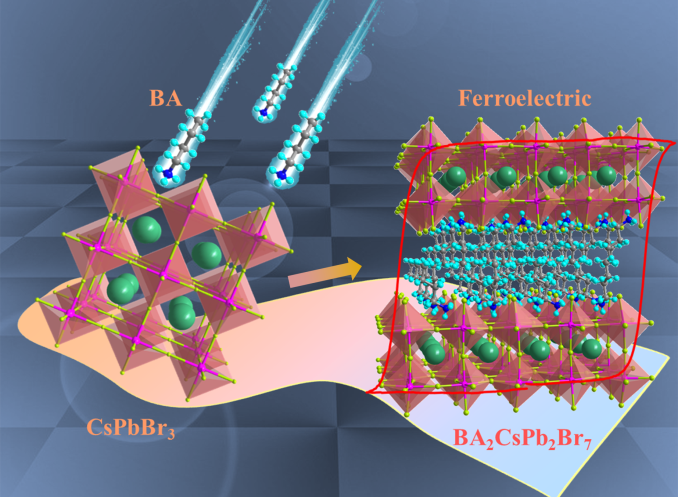
Pure inorganic perovskites (CsPbX3, X = Cl, Br, I) have drawn great attention over the past years. However, to design new cesium-based ferroelectrics remains a challenge.
Recently, Prof. LUO Junhua's group at Fujian Institute of Research on the Structure of Matter of Chinese Academy of Sciences constructed the first two-dimensional bilayered perovskite ferroelectric containing both inorganic alkali metal (Cs) and organic cation.
By alloying the organic cation into the cubic perovskite prototype of CsPbBr3, the atomic displacement of inorganic alkali metal Cs+ and the disordered disorder of organic cation synergistically induce the ferroelectric spontaneous polarization for the compound, which is different from previously-reported hybrid perovskite ferroelectrics.
Besides, this hybrid ferroelectric compound was revealed to exhibit a high Curie temperature Tc = 412 K, even higher than that of the classic inorganic ferroelectric of BaTiO3 (~393 K).
For photoelectric devices using these perovskite ferroelectric crystals, very large “on/off” ratios of photoconductivity (> 103) can be achieved, which shows its potential in the field of photodetection.
This study provided a new strategy for hybrid perovskite ferroelectrics design, and will benefit the study on ferroelectric mechanisms and optoelectronic applications. It was published in Angew. Chem. Int. Ed.
Perovskite ferroelectrics, as an important class of polar optoelectronic materials, have promising applications in the fields such as nonlinear optics, pyroelectric detection and data storage.

Scheme for inserting organic cation into the cubic CsPbBr3 prototype to form new hybrid perovskite ferroelectric (Image by Prof. LUO’s group)

86-10-68597521 (day)
86-10-68597289 (night)

52 Sanlihe Rd., Xicheng District,
Beijing, China (100864)

